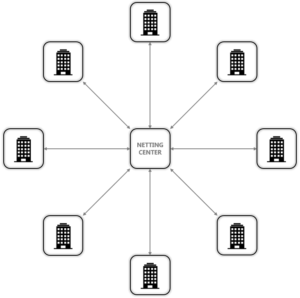The Core Benefits of Netting For Corporates
| 29-8-2019 | treasuryXL | BELLIN
Simplify intercompany commerce, minimize fees and elevate visibility
Understanding the core benefits of netting
Multinational corporations are familiar with the downsides when involved with intercompany commerce. Growing transaction fees, currency exchange risk, and lack of transparency are common facets that make it difficult for such organizations. Corporations can implement netting to mitigate those downsides and free up valuable time for treasury and accounting departments. This article will shed light on the benefits of netting and why your company needs to consider implementing it.
A brief definition of netting
Netting or “Intercompany Netting” is the process of reconciling and netting intercompany invoices between two parties, resulting in a final payment and netted cashflow. In regard to financial markets, the purpose is essentially to minimize transactions and distinguish remuneration in multiparty agreements. Netting is suitable for various situations, participants, and cycle types. For more information, check out our in-depth guide to netting here.
Bilateral Netting: Two companies reconcile invoices they may owe to each other and one company agrees to pay the other one sum.
Multilateral Netting: Three or more companies netting invoices together and a netting center is used.

Further Reading: Netting: An Immersive Guide to Global Reconciliation
Macro benefits of netting
Foreign Exchange Risk Mitigation
Multinational companies often perform transactions with their own subsidiaries or with non-group companies. Because of this, companies must keep currency exchange rates in mind. Original invoices are often sent in the originating currency, which raises the need for either an external exchange service, a bank, or a netting center. With netting, the foreign exchange risk is centralized to the netting center.
It will not only keep existing invoicing procedures intact but avoid the loss of money involved with inflated currency exchange rates when using external exchanges. As mentioned, the FX risk is transferred from individual subsidiaries to the parent company, which is usually more equipped to manage it.
Floating money is wasted money
Cash-in-transit is a thorn in just about everyone’s side. Stagnant approval and processing times can create a chain reaction of risk as that cash is unable to be used. Whether it is bilateral or multilateral netting, keeping invoices to a minimum reduces the amount of money that is stuck in the limbo phase of approvals and processing times.
Increased transparency
Treasurers are able to operate at a high level when they are afforded visibility of cash flows. When subsidiaries make bulk payments, lack of liquidity or financing issues can arise and if company-wide visibility is lacking, it becomes difficult for a treasury department to act accordingly. Bulk payments backload and are concentrated in a short amount of time, cash flow is stretched thin among many of the subsidiaries. A netting system will provide daily reports and monitoring tools that provide cash flow visibility throughout the group.

Maximize operational efficiency
Naturally, one of the more prominent benefits of netting occurs on a daily basis. Treasury departments will see a drastic reduction in time spent on transactions and managing foreign exchange risk. From an operational point of view, a netting process simply saves treasurers time and establishes a company-wide process for disputes.
An example of this is with BELLIN clients, who save an average of 2 days of work per month per affiliated company. For an organization of 30 affiliated companies, that’s 60 days per month or 720 days a year. Realized savings typically range from $250,000 to +$1,000,000 on an annual basis.
Manage Disputes
When implementing a netting system, the treasury department is tasked with establishing a protocol for managing disputes. When subsidiaries fail to submit payables, a hitch in the payment process is born. What this causes is the inability for the payee to continue with their daily operation as they wait for receivables. Administrators can establish automated escalation protocols, which will elevate disputes to upper management based on pre-defined time periods. The escalation system leads to both tangible and intangible benefits as it literally resolves disputes through escalation and also provides an incentive for subsidiaries to execute their payables to avoid the unnecessary involvement of management.
 BELLIN tm5: a comprehensive netting solution
BELLIN tm5: a comprehensive netting solution
BELLIN’s intuitive TMS: tm5, has a netting module that reconciles invoices and manages disputes with an ‘agreement-driven approach’.
The ‘agreement-driven approach’ is essentially a self-clearing methodology that utilizes the previously-mentioned: escalation protocol. tm5 automatically matches all receivables against payables and has an embedded dispute workflow for discrepancies. Consequently, the group company establishes group-wide agreements for disputes and will elevate them accordingly. With such an approach, all subsidiaries are involved in the entire process, disputes are mitigated and automatically escalated, and there is group-wide transparency.
BELLIN’s tm5 netting module has an intuitive interface but the key ingredient that makes it shine is that the platform has standardized functionality with the flexibility to meet the needs of all subsidiaries.
Interested in finding out more about whether netting is the right solution for you? Give BELLIN a shout or check out tm5, our intuitive treasury management system.













